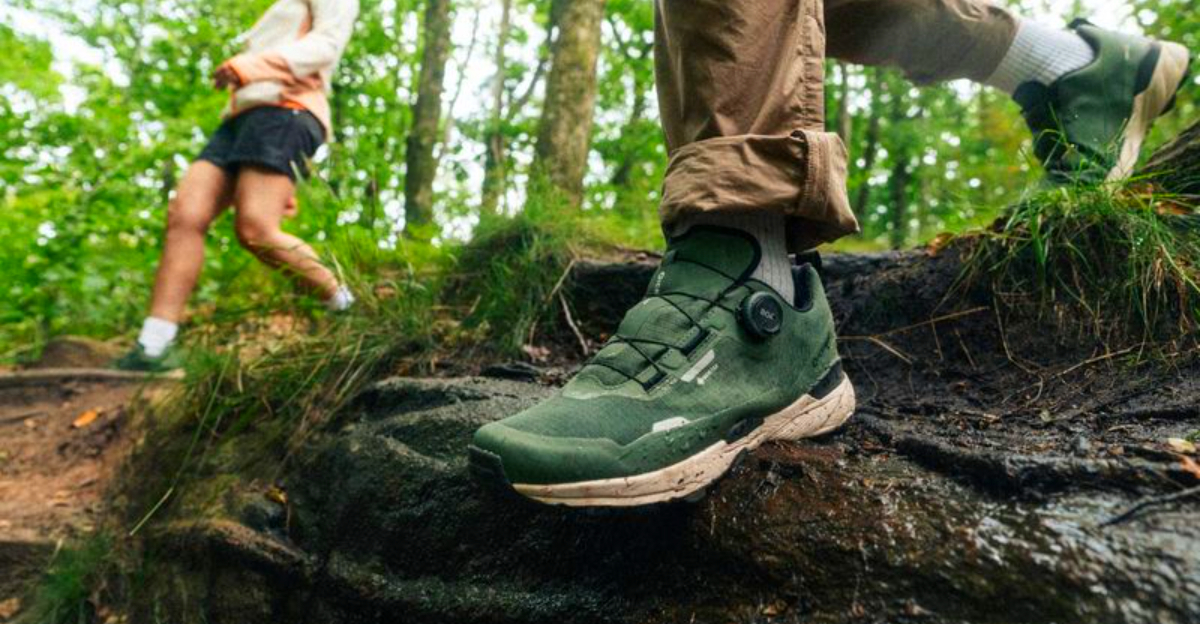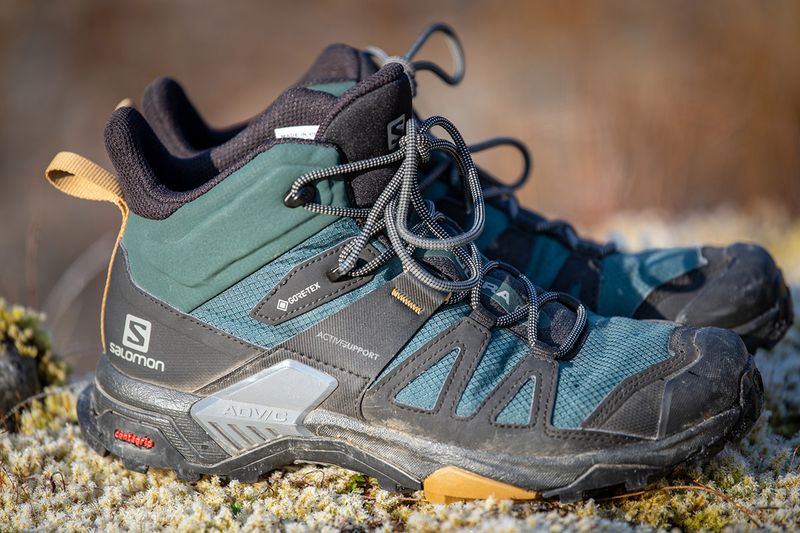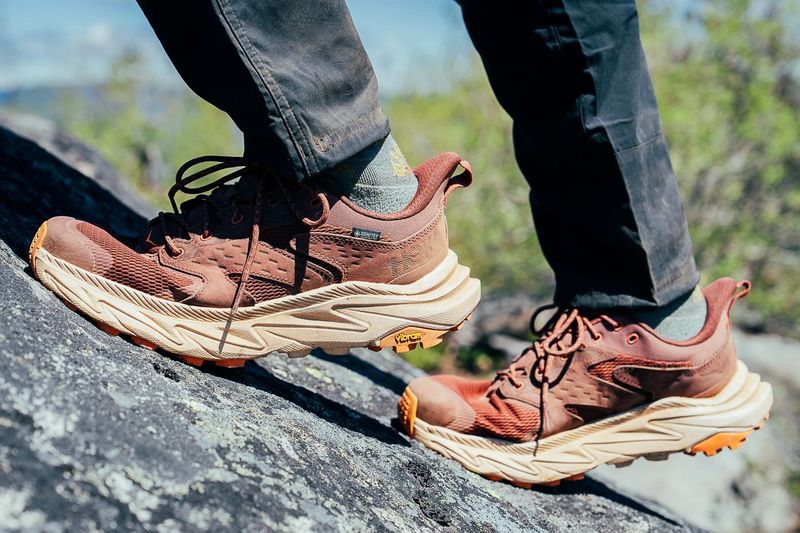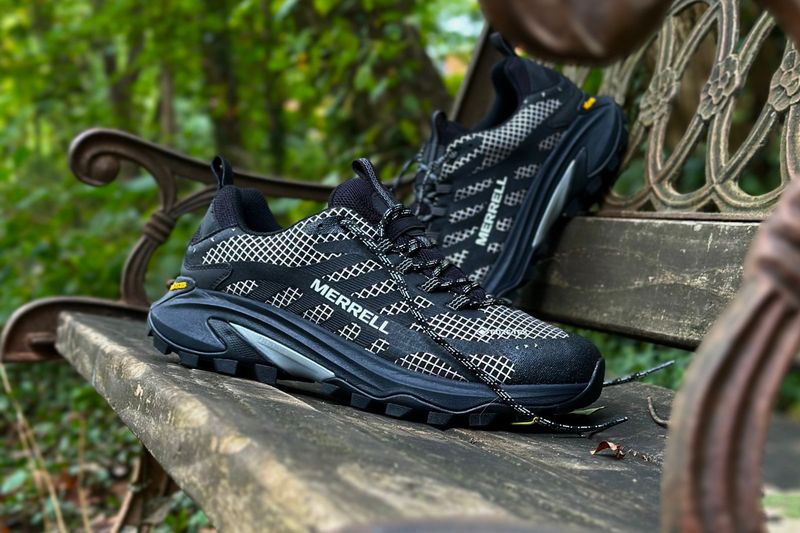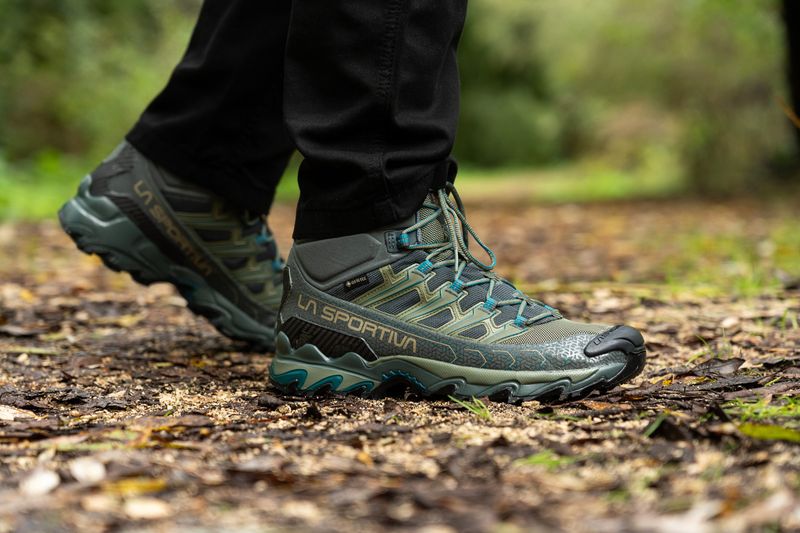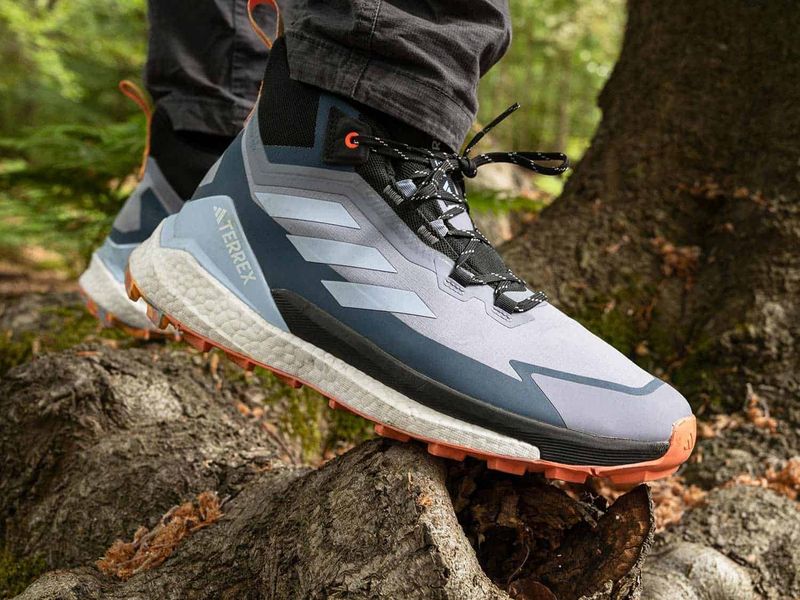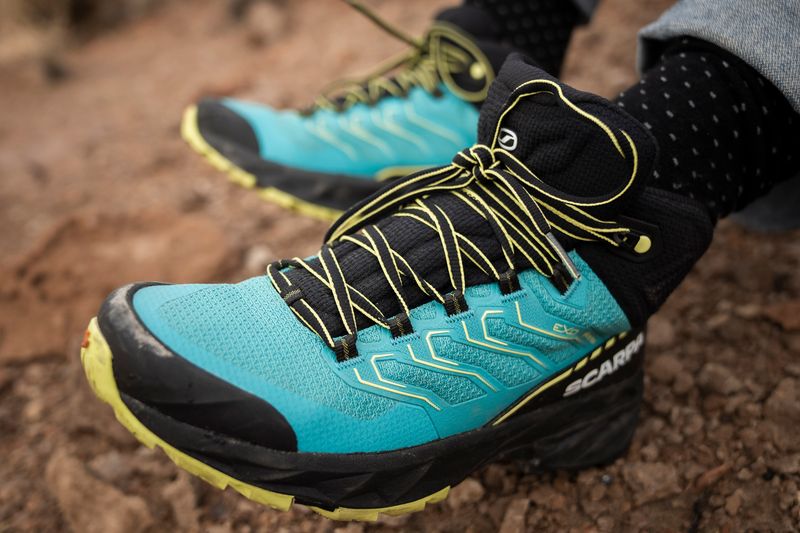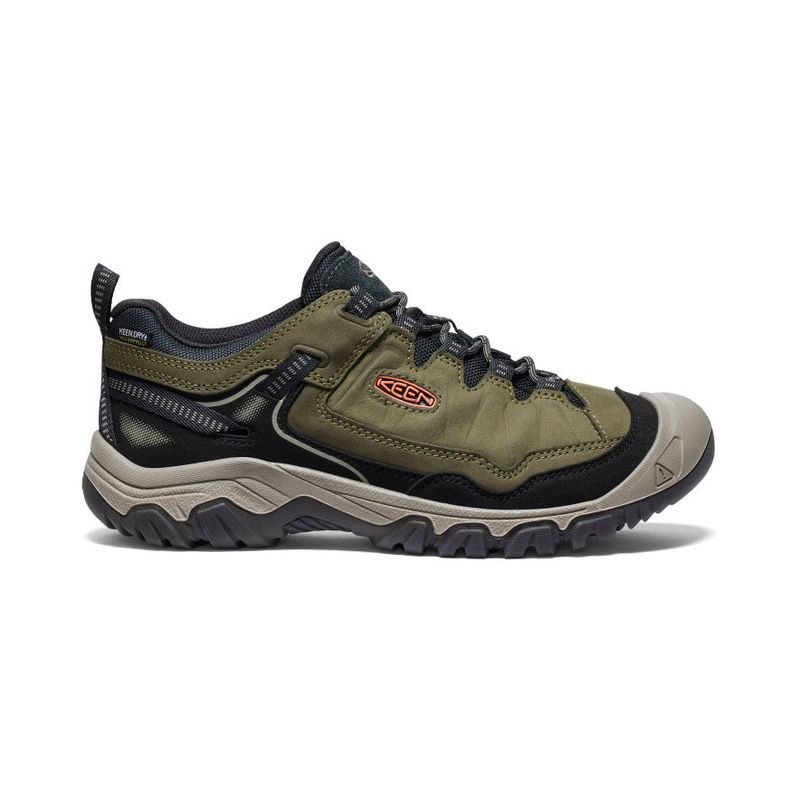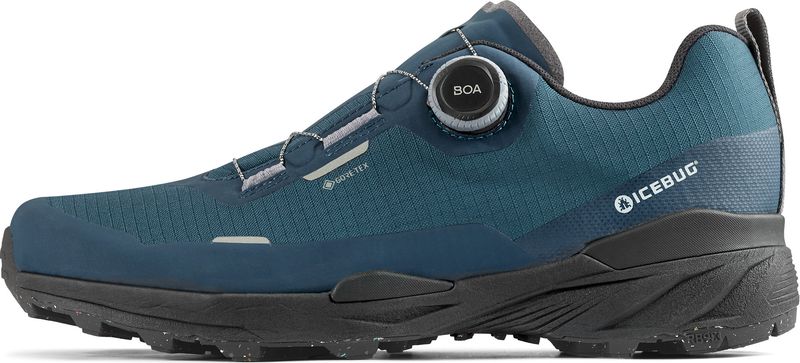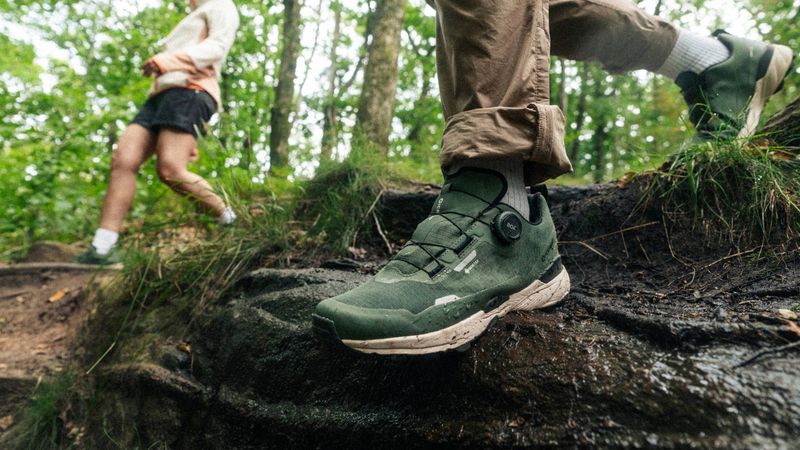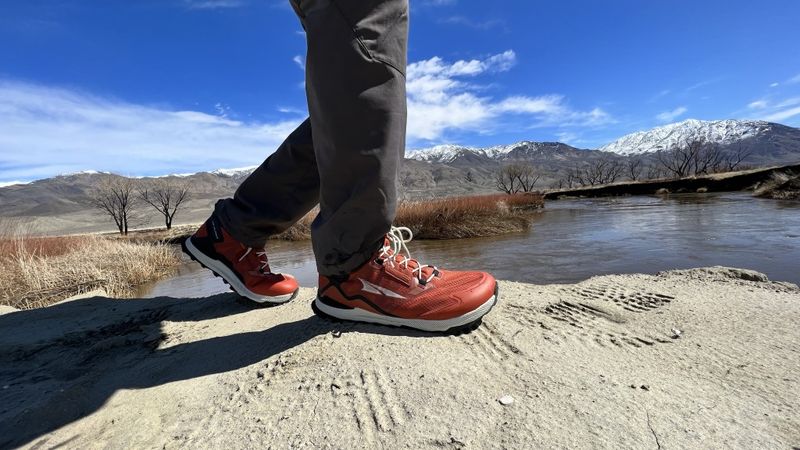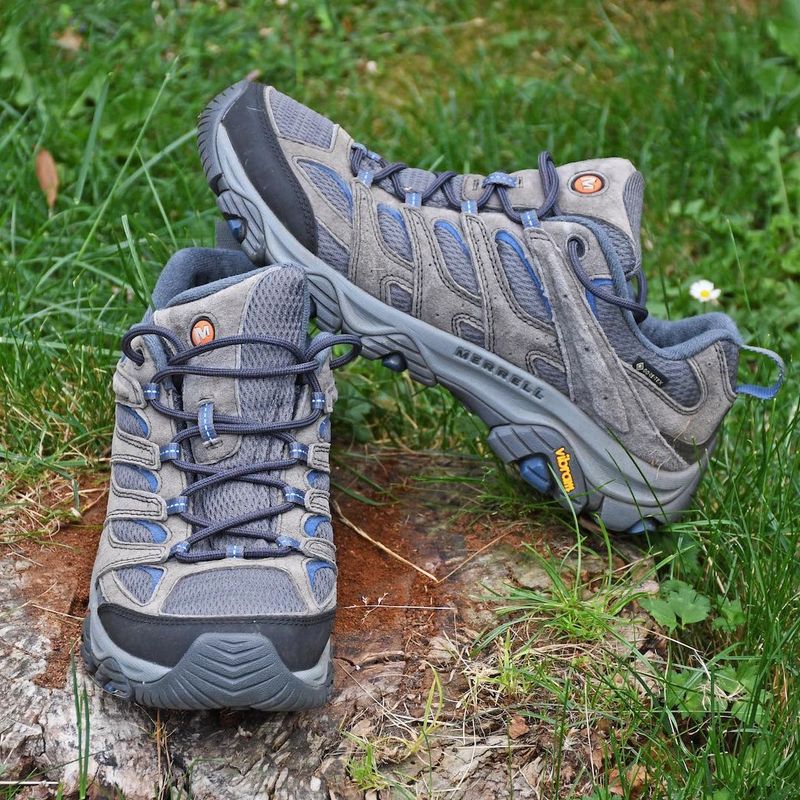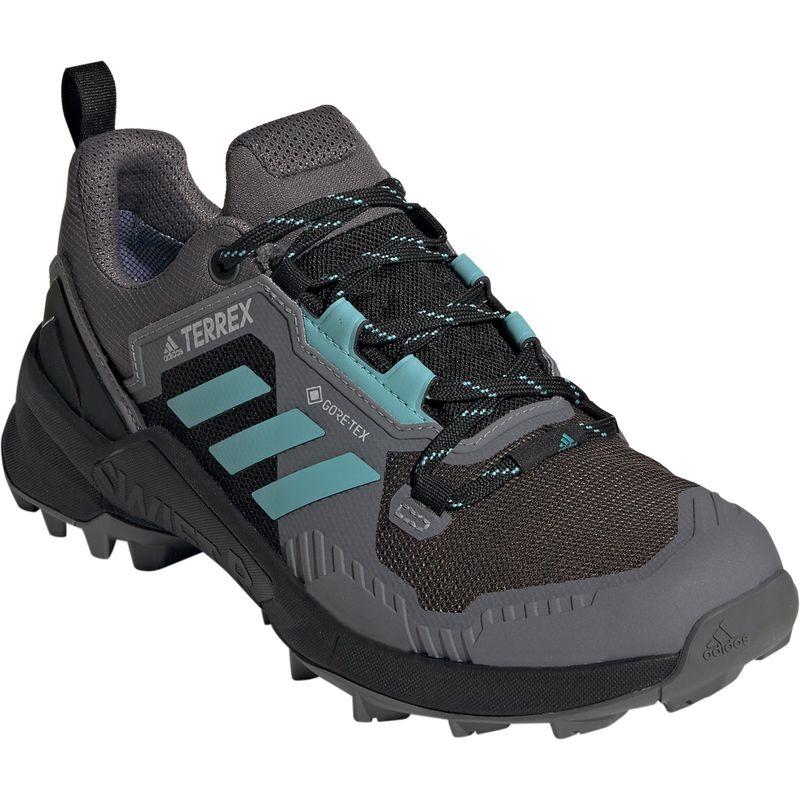Winter trails demand footwear that can handle snow, slush, ice, and freezing temperatures without leaving your feet soaked or slipping on every turn. Choosing the right pair of winter hiking shoes makes all the difference between an adventure you’ll remember fondly and one you’ll want to forget. Whether you’re tackling icy mountain paths or muddy forest trails, having reliable grip, waterproof protection, and warmth keeps you safe and comfortable mile after mile.
1. Salomon X Ultra 4 GTX — the all-rounder most people should start with
When you need a shoe that handles almost everything winter throws at you, this model delivers without drama. Gore-Tex waterproofing seals out slush and puddles while the Contagrip MA outsole grips confidently on slick, uneven terrain.
Salomon built a stable chassis into these shoes, so your ankles stay supported even when trails turn icy or rocky. What sets them apart is their agile, runner-like feel—you get nimble movement without sacrificing the structure serious hikers need.
Perfect for beginners and veterans alike, they strike a sweet balance between comfort and technical performance. If you’re unsure where to start your winter footwear search, this versatile option rarely disappoints on mixed conditions.
2. Hoka Anacapa 2 Low GTX — plush comfort + serious wet-weather grip
Cushioning fanatics, meet your match. Hoka packed this shoe with their signature plush midsole foam, then wrapped it in GORE-TEX Invisible Fit for waterproof warmth that doesn’t feel bulky. Vibram Megagrip rubber underneath bites into wet rock and packed snow like few others can.
Recent testing shows top comfort scores, and the brand uses more earth-friendly materials without compromising performance. Your feet stay sealed up and cozy even when conditions turn miserable.
Long miles on cold, damp trails won’t leave you hobbling—the cushion absorbs impact while the grippy sole keeps you upright. If comfort ranks high on your priority list, this option won’t let you down.
3. Merrell Moab Speed 2 GTX — value, fit, and no-drama traction
Budget-conscious hikers rejoice—this shoe punches well above its price tag. Weighing in at roughly 12.3 ounces per shoe, it’s light enough for all-day wear yet still packs a waterproof membrane and Vibram TC5+ outsole with 4mm lugs for dependable grip across multiple surfaces.
Merrell added extra foam underfoot in this generation, boosting comfort without ballooning the weight. You get reliable multi-surface traction whether you’re crossing snowy meadows or scrambling over wet boulders.
No flashy gimmicks here—just solid, dependable performance that won’t drain your wallet. If you want straightforward winter protection and traction without overthinking your choice, this practical option gets the job done every time.
4. La Sportiva Ultra Raptor II GTX — technical traction when trails turn nasty
Steep, icy scrambles separate casual hikers from serious mountain lovers—and this shoe was built for the latter. La Sportiva’s sticky FriXion XF 2.0 rubber grips cold rock and snow with confidence, while a protective wrap shields your feet from sharp edges and impacts.
Security on technical terrain is where this model truly shines. You’ll feel planted even when footing gets sketchy, though heavy mileage on abrasive surfaces can wear the outsole faster than softer rubber compounds.
If your winter routes involve exposed ridges, frozen creek crossings, or mixed conditions where one slip could mean trouble, this technical option provides the sure-footedness you need. Not overkill for gnarly trails—just right.
5. adidas Terrex Free Hiker 2 GTX — sock-like comfort, winterized
Imagine slipping into your favorite sneakers, then realizing they’re actually tough enough for winter trails. That’s the magic here—a sock-like fit meets Gore-Tex waterproofing and Continental rubber outsole tuned for cold-weather grip.
The rockered Boost midsole keeps your legs feeling fresh even on long, chilly outings by promoting a natural rolling motion with each step. This crossover design bridges the gap between technical hiker and everyday sneaker without sacrificing weather protection.
You’ll appreciate how effortlessly these move when trails are clear, yet they still seal out slop when conditions deteriorate. Perfect for hikers who refuse to choose between comfort and capability, this modern take on winter footwear feels surprisingly natural right out of the box.
6. Scarpa Rush 2 GTX — fast-hiking support with real waterproofing
Speed demons who still need stability, pay attention. Scarpa engineered this shoe for fast-paced hiking without skimping on support—Gore-Tex liner keeps moisture out while the PRESA sole and anti-torsion frame stabilize your stride on frozen ruts and muddy descents.
Multiple independent reviews consistently praise how well this model balances agility with structure. You can push the pace on straightaways, then trust the frame to keep you upright when terrain gets unpredictable.
Winter trails often mean sloppy, uneven conditions where both speed and security matter. This option delivers both without forcing you to compromise, making it ideal for hikers who cover ground quickly but still need confidence on technical sections.
7. KEEN Targhee IV Waterproof (Low) — wide-friendly fit, rugged outsole
Folks with wider feet know the struggle of finding winter hikers that don’t pinch. KEEN’s trademark roomy toe bumper gives your toes breathing room even with thick socks, while KEEN.DRY waterproofing and the KEEN.RUGGED outsole handle slush and light snow admirably.
The new fused, glue-free construction boosts durability, so these shoes last season after season. When deeper winter arrives, they pair beautifully with microspikes for added traction on ice.
Comfort shouldn’t mean sacrificing a proper fit, and this model proves you can have both. If traditional hiking shoes leave your feet cramped or sore, this wide-friendly design offers relief without compromising on winter-ready features or rugged performance.
8. Icebug Rover 2 RB9X GTX — eco-minded, waterproof, and winter-grippy (non-studded)
Icebug built its reputation on winter traction, and this non-studded version proves you don’t always need metal to stay upright. RB9X rubber is specially tuned for cold surfaces, while the Gore-Tex liner seals out moisture and the BOA fit system tightens easily even with gloves on.
Eco-conscious hikers will appreciate the brand’s commitment to sustainability without sacrificing performance. The dial closure is a game-changer when your fingers are numb and fumbling with laces sounds miserable.
For winter conditions that stop short of full-on ice, this option delivers serious grip and convenience. You get Icebug’s legendary cold-weather expertise in a package that won’t chew up indoor floors or dry trail surfaces the way studded shoes can.
9. Icebug Rover 2 BUGrip GTX — built-in studs for ice days
Black ice and frozen trails call for serious hardware. Dynamic carbide-steel studs embedded in the BUGrip sole bite into ice like claws, while Gore-Tex keeps snowmelt and slush from soaking through.
These studs aren’t subtle—they’re overkill for indoor floors or dry trails, but when conditions turn truly icy, nothing else comes close. You’ll walk with confidence on surfaces that would send other hikers sliding.
Pick this option when ice is a regular part of your winter hiking reality. The studs retract slightly on hard surfaces to reduce wear, but you’ll still want to avoid wearing them indoors. For genuinely hazardous icy conditions, this is the gold standard that keeps you upright when others turn back.
10. Altra Lone Peak ALL-WTHR Low 2 — natural foot shape + weather shield
Altra’s FootShape toe box lets your toes spread naturally, which is especially welcome when you’re layering thick winter socks. A waterproof bootie seals out moisture while the grippy MaxTrac outsole handles varied terrain with confidence.
This shoe works best for lighter loads and hikers with wider feet who appreciate a more natural foot position. It’s not brick-stiff like traditional hikers—flexibility and toe freedom define the experience here.
If you’ve struggled with cramped toe boxes or prefer a zero-drop platform, this winter-ready option delivers weather protection without forcing your feet into a narrow, rigid mold. The roomy fit and natural feel make long days on the trail far more enjoyable for those who value comfort over heavy-duty structure.
11. Merrell Moab 3 GTX (Low) — the classic, made winter-ready
Sometimes you just want a dependable workhorse that doesn’t require a learning curve. The Moab line has earned its reputation through years of proven performance, and this third generation adds time-tested waterproof protection perfect for winter conditions.
All-day comfort is the hallmark here, though these aren’t the lightest shoes on the market. They shine brightest on casual winter hikes and travel where reliability and availability matter more than cutting-edge features.
Widely available and budget-friendlier than many competitors, this classic option gets the job done without fuss. If you value a known quantity over experimental designs, this familiar favorite delivers winter-ready performance you can trust mile after comfortable mile.
12. adidas Terrex Swift R3 GTX — stability when trails get rutted and slick
Frozen, rutted trails test your balance with every step. This shoe answers that challenge with a firm platform and Continental rubber that keeps you upright when footing gets treacherous.
Recent roundups consistently highlight this model as a top pick for stability—crucial when winter conditions create uneven, unpredictable surfaces. The rigid structure might feel less nimble than lighter options, but that’s the trade-off for confidence on sketchy terrain.
If ankle-twisting ruts and icy patches make you nervous, this stability-focused option provides the reassurance you need. You’ll sacrifice a bit of agility, but gain the peace of mind that comes from a shoe engineered to keep you steady when winter trails do their worst.
